A robot fly that does not die even if it is pulled with a fly swatter is developed

A research team at the Integrated Actuators Laboratory at the Swiss Federal Institute of Technology Lausanne (EPFL) has developed a fly-type robot ' DEAnsect ' equipped with soft materials and artificial muscles. This DEAnsect is so flexible that it cannot be crushed with a fly swatter, and it is expected to play an active role as an insect-type robot.
An autonomous untethered fast soft robotic insect driven by low-voltage dielectric elastomer actuators | Science Robotics
A soft robotic insect that survives being flattened by a fly swatter-EPFL
https://actu.epfl.ch/news/a-soft-robotic-insect-that-survives-being-flattene/
In the following movie, you can actually see where DEAnsect is caught with a fly.
A soft robotic insect that survives being flattened by a fly swatter-YouTube
DEAnsect is on the graph paper.
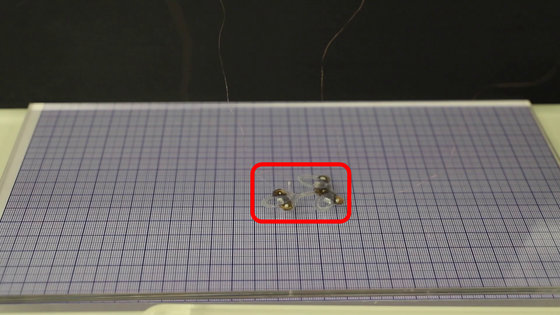
A fly swatter came out ...
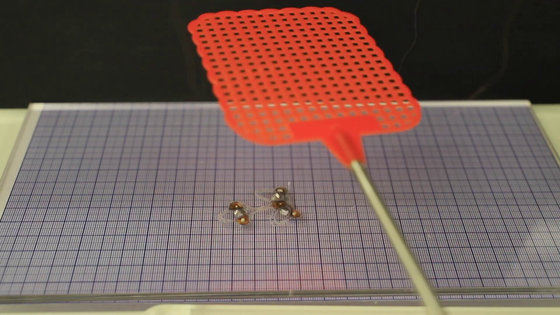
Bassi!
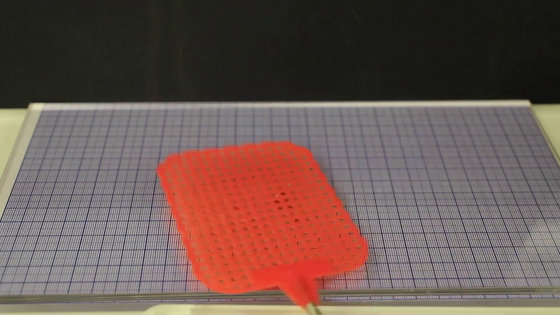
However, pulling the wire connected to DEAnsect ...
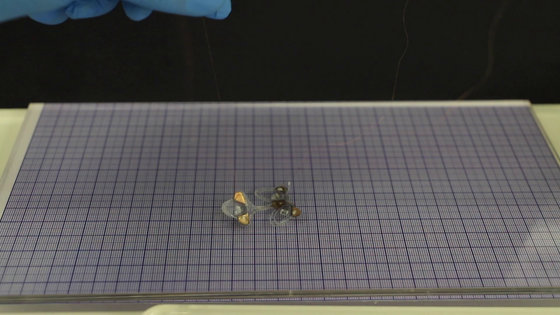
DEAnsect started to move again.
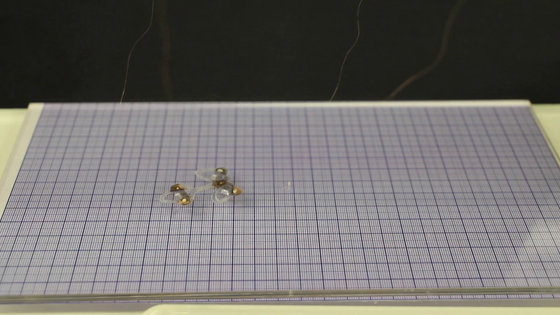
DEAnsect weighs approximately 0.2 grams and is made of a soft material.
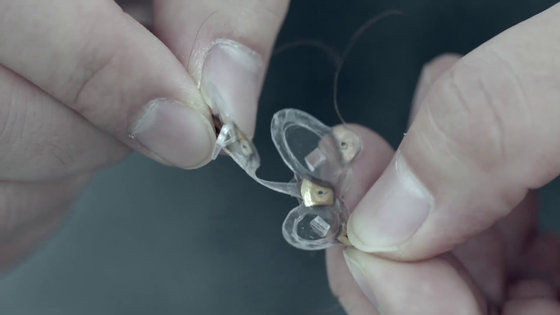
DEAnsect is equipped with a photodiode instead of eyes, so it can distinguish black and white and can move at a speed of about 3cm per second by following the line drawn on the floor.
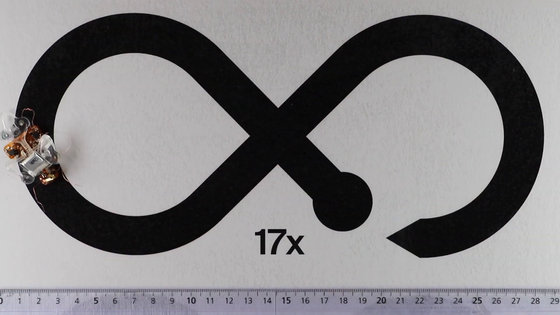
There is also a version that can operate autonomously completely wirelessly, equipped with a microcomputer board and battery. Since DEAnsect itself can operate at a very low voltage, a very small battery is sufficient.
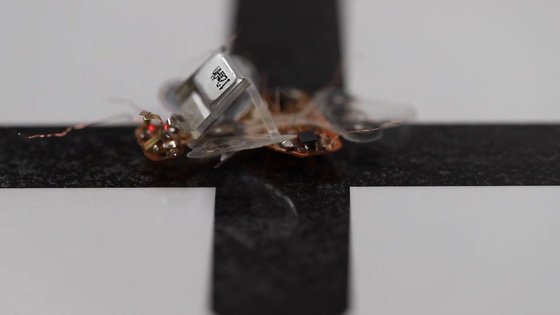
Looking at DEAnsect from above, it looks like this. The right side is the head, and has a three-leg structure with one forefoot and two hind legs.
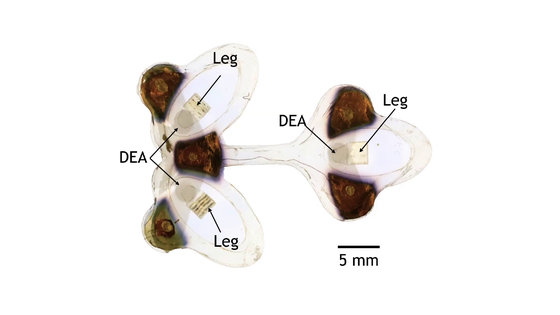
The legs can be reciprocated 450 times per second by an artificial muscle composed of an
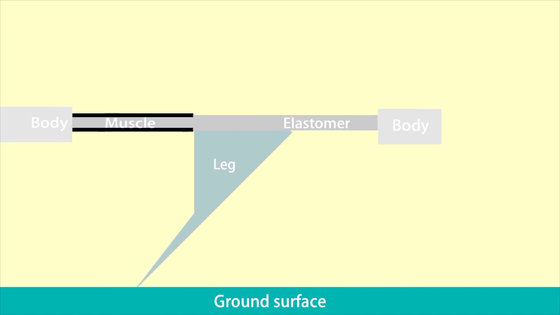
Herbert Shea commented, “In the future, we are planning to install a two-way communication function and move multiple DEAnsects as a group.” DEAnsect is expected to be a difficult task for human beings, such as pollination of flowers as a robot bee and active as a device to investigate disaster areas.
Related Posts:







